This palm tree belongs to the Livistona genre: magnificent trees, most of which originated in Australia. The genre is named for a Scottish gentleman, Patrick Murray, Baron of Livingston, who, in the 17th century, in Edinburgh, Scotland, founded a botanical garden of exotic plants.
Livistona speciosa is a palm of 10-25 metres, that grows freely in the dense evergreen forests of the Indo-China peninsula, at a medium altitude, but is seen here and there at lower altitudes. Its large fronds (correct name for palm ‘leaves’) take the form of a fan, its blue-black fruits are globuse, of about 2-3 cm, and edible when ripe.
Beginning in mid-May, they are seen in the markets, where they arrive after having been picked in the forests. There are many possible methods of preparation for the mak kho. Usually, they are quickly soaked in hot water, because if they are left too long, they become hard, then pitted, and a paste can be made, either salty or sweet – for example, for making sauces. They can also be sun-dried or put into brine after they have been blanched. In each case, it is better to peel them, otherwise they will be bitter.
There are no indications of medicinal uses for this palm, but, in Laos, it is said that the older one gets, the more one must eat its fruits.
When the mountain-dwellers of Laos do not have any nya kha (Imperata cylindrica), they use the palm of the Livistona speciosa to make the roofs of their houses: by folding the palm over itself, and braiding it, they get a type of tiles that will last about three years. They can also mix tiles made from both straw and palm leaves to make the same roof.
Ce palmier appartient au genre Livistona, magnifiques arbres dont la plupart sont originaires d’Australie. Le nom du genre vient d’un gentleman écossais, Patrick Murray baron de Livingstone, qui, au XVII° siècle, fournit en plantes exotiques le jardin botanique d’Édimbourg.
Livistona speciosa est un palmier atteignant 10 à 25m, croissant spontanément dans les forêts denses sempervirentes de la péninsule indochinoise, à moyenne altitude et rencontré çà et là, à basse altitude, près des habitations. Ses grandes palmes ont la forme d’éventail, ses fruits sont globuleux, de 2 à 3cm, bleu noir à maturité, comestibles.
On les voit dès la mi-mai sur les marchés où ils arrivent des forêts où ils ont été cueillis. Plusieurs modes de préparations sont possibles pour les mak kho. En général on les trempe rapidement dans de l’eau chaude, car si on les y laisse trop longtemps ils durcissent, on les dénoyaute et on obtient une pâte qui s’utilise salée ou sucrée, par exemple pour faire des sauces. On peut aussi les faire sécher au soleil, ou les mettre en saumure après avoir été blanchis. Dans tous les cas il vaut mieux les éplucher sinon ils sont âpres.
On ne signale pas d’usage médicinal de ce palmier mais on dit au Laos que plus on est vieux plus on doit manger de ses fruits.
Les populations montagnardes du Laos utilisent les palmes de Livistona speciosa pour faire le toit de leur maison quand ils n’ont pas de nya kha (Imperata cylindrica); en repliant la palme sur elle-même et en la tressant ils obtiennent des sortes de tuiles qui dureront à peu près trois ans. Ils peuvent aussi mélanger dans un même toit des tuiles de d’herbe à paillote et de palmier.
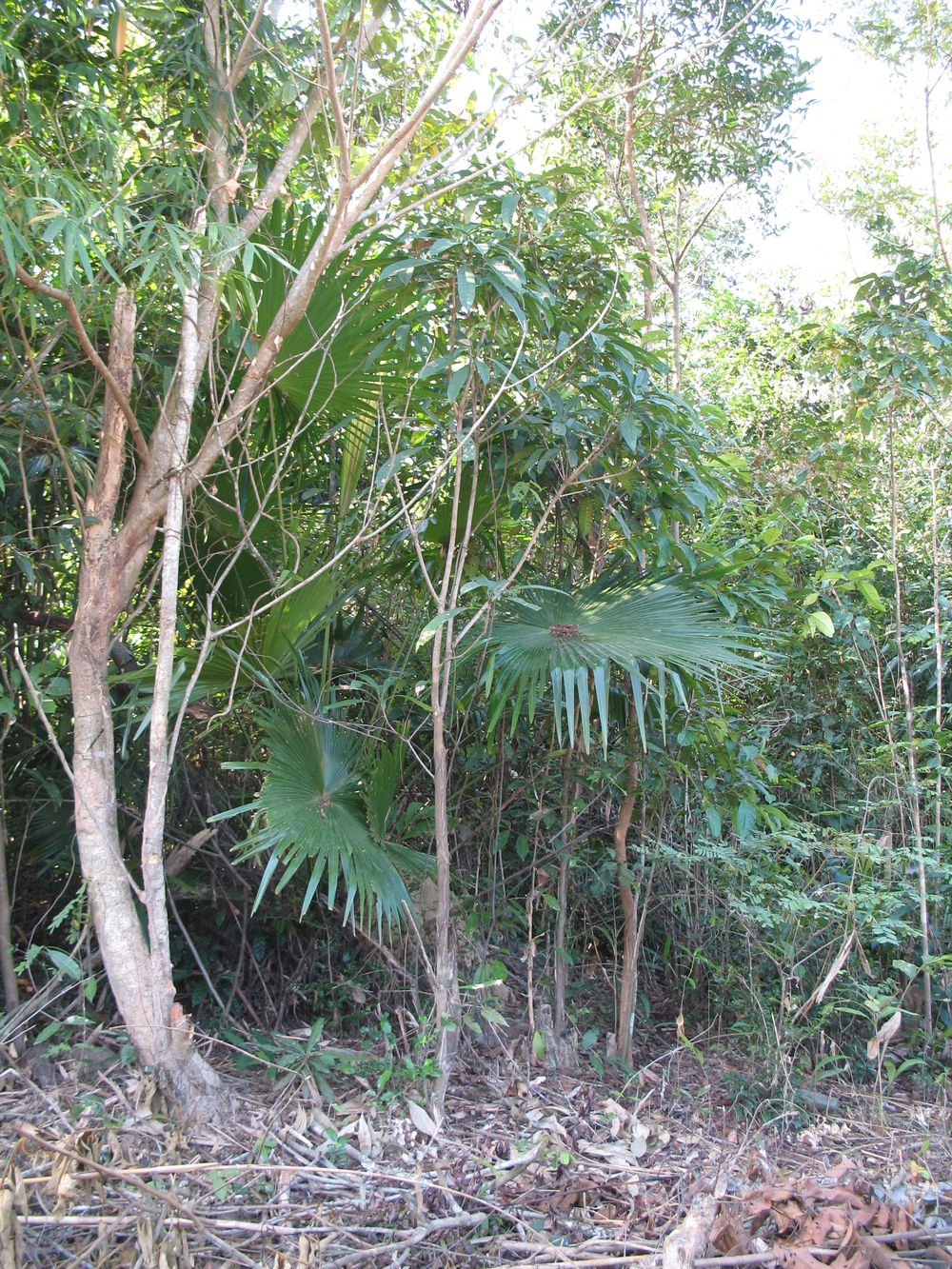
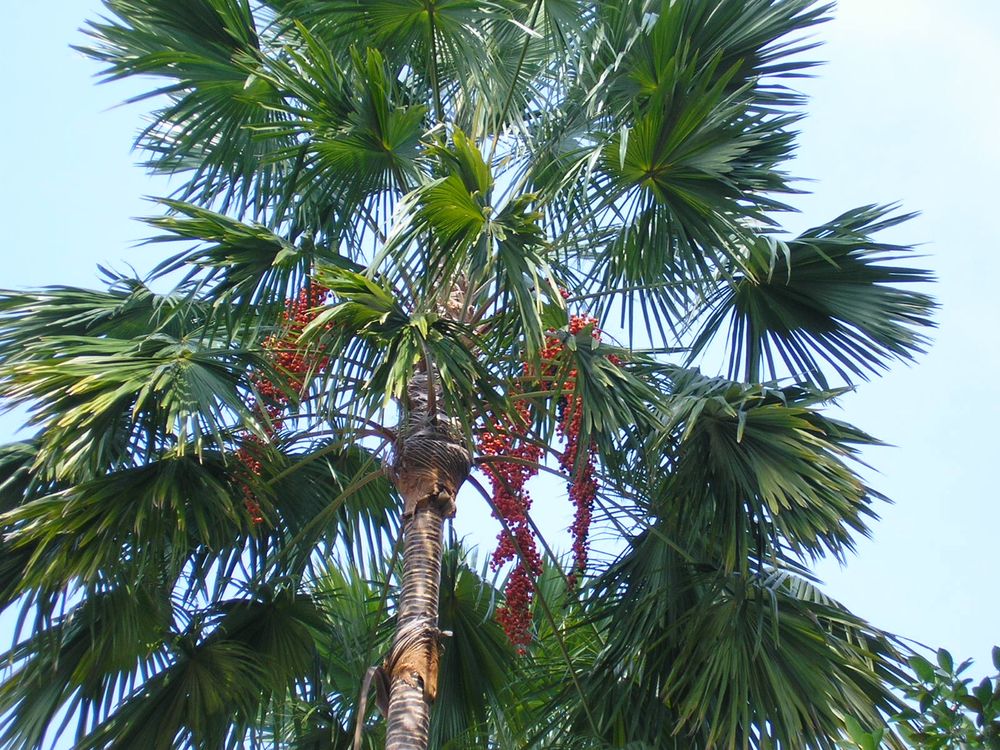

©Somchine
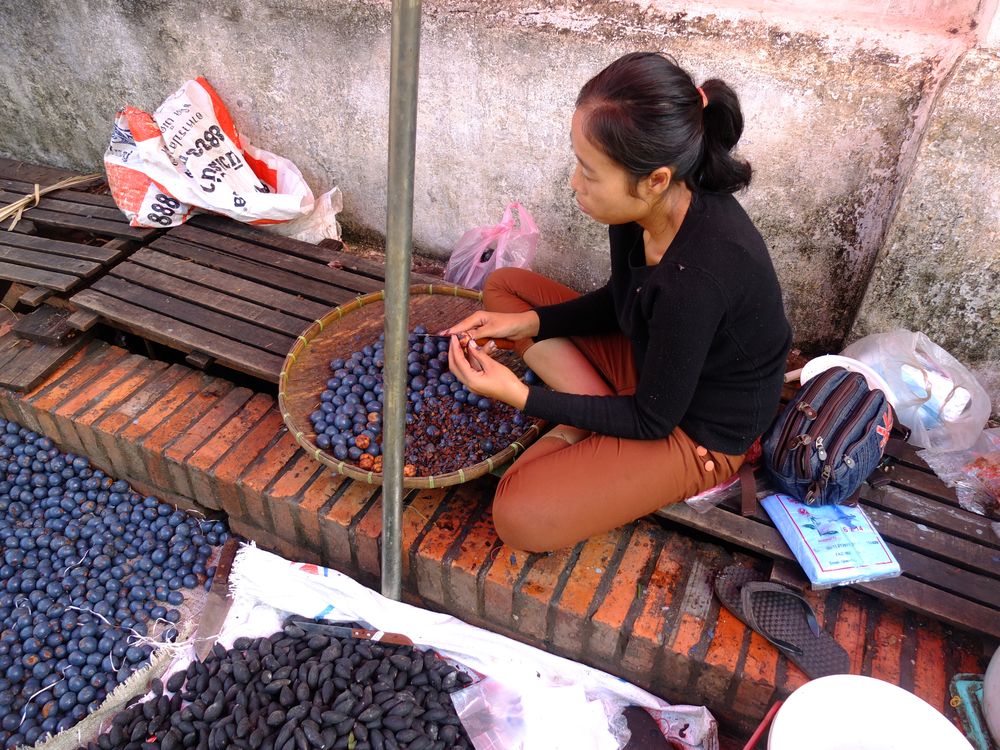
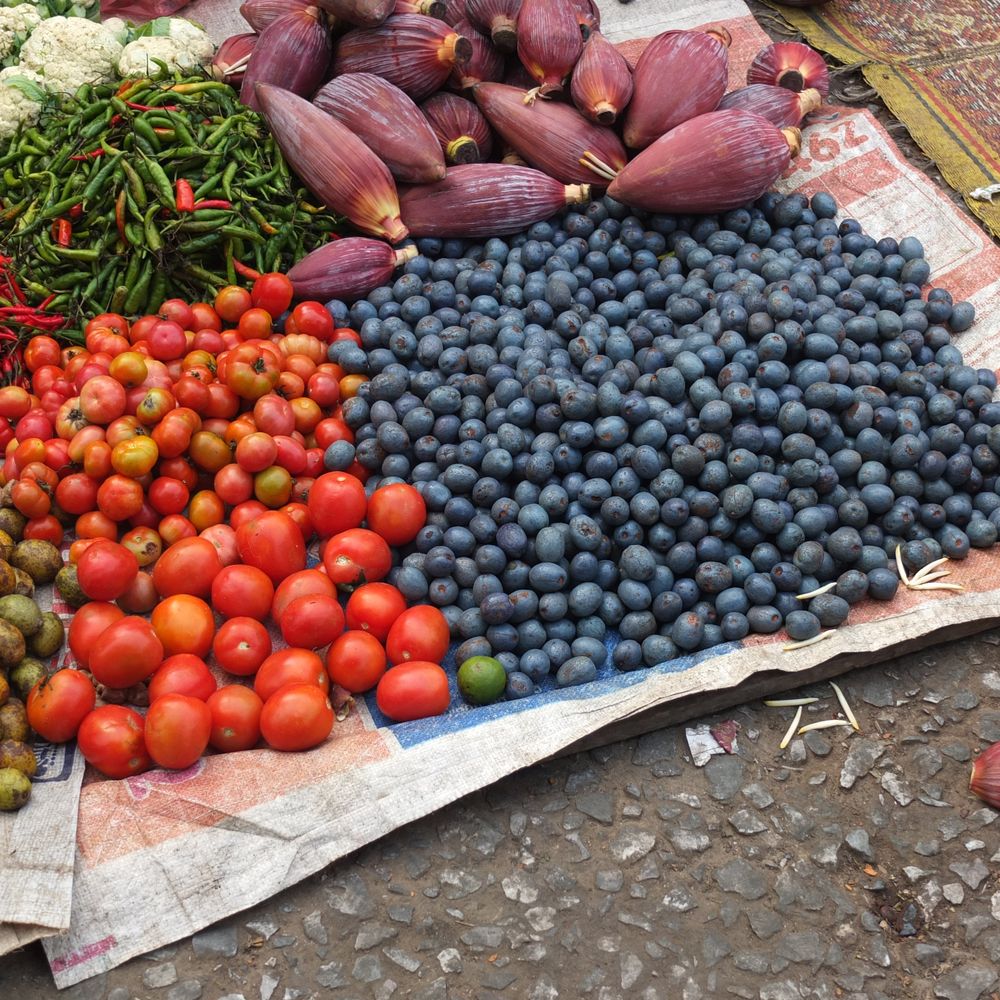
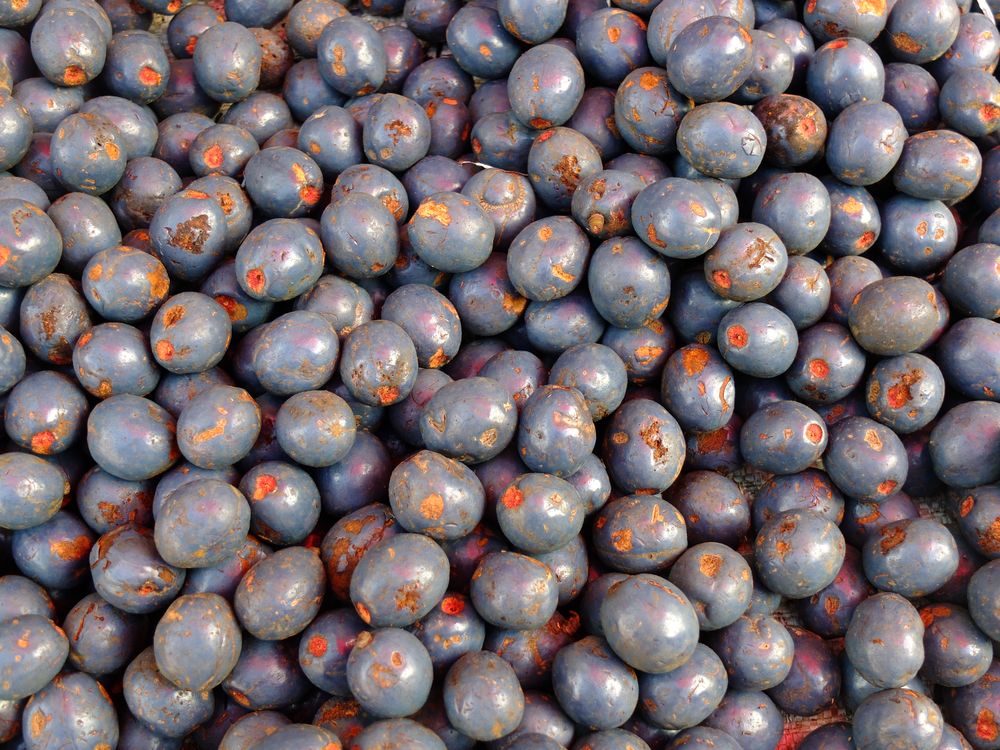
This palm tree belongs to the Livistona genre: magnificent trees, most of which originated in Australia. The genre is named for a Scottish gentleman, Patrick Murray, Baron of Livingston, who, in the 17th century, in Edinburgh, Scotland, founded a botanical garden of exotic plants.
Livistona speciosa is a palm of 10-25 metres, that grows freely in the dense evergreen forests of the Indo-China peninsula, at a medium altitude, but is seen here and there at lower altitudes. Its large fronds (correct name for palm ‘leaves’) take the form of a fan, its blue-black fruits are globuse, of about 2-3 cm, and edible when ripe.
Beginning in mid-May, they are seen in the markets, where they arrive after having been picked in the forests. There are many possible methods of preparation for the mak kho. Usually, they are quickly soaked in hot water, because if they are left too long, they become hard, then pitted, and a paste can be made, either salty or sweet – for example, for making sauces. They can also be sun-dried or put into brine after they have been blanched. In each case, it is better to peel them, otherwise they will be bitter.
There are no indications of medicinal uses for this palm, but, in Laos, it is said that the older one gets, the more one must eat its fruits.
When the mountain-dwellers of Laos do not have any nya kha (Imperata cylindrica), they use the palm of the Livistona speciosa to make the roofs of their houses: by folding the palm over itself, and braiding it, they get a type of tiles that will last about three years. They can also mix tiles made from both straw and palm leaves to make the same roof.
Ce palmier appartient au genre Livistona, magnifiques arbres dont la plupart sont originaires d’Australie. Le nom du genre vient d’un gentleman écossais, Patrick Murray baron de Livingstone, qui, au XVII° siècle, fournit en plantes exotiques le jardin botanique d’Édimbourg.
Livistona speciosa est un palmier atteignant 10 à 25m, croissant spontanément dans les forêts denses sempervirentes de la péninsule indochinoise, à moyenne altitude et rencontré çà et là, à basse altitude, près des habitations. Ses grandes palmes ont la forme d’éventail, ses fruits sont globuleux, de 2 à 3cm, bleu noir à maturité, comestibles.
On les voit dès la mi-mai sur les marchés où ils arrivent des forêts où ils ont été cueillis. Plusieurs modes de préparations sont possibles pour les mak kho. En général on les trempe rapidement dans de l’eau chaude, car si on les y laisse trop longtemps ils durcissent, on les dénoyaute et on obtient une pâte qui s’utilise salée ou sucrée, par exemple pour faire des sauces. On peut aussi les faire sécher au soleil, ou les mettre en saumure après avoir été blanchis. Dans tous les cas il vaut mieux les éplucher sinon ils sont âpres.
On ne signale pas d’usage médicinal de ce palmier mais on dit au Laos que plus on est vieux plus on doit manger de ses fruits.
Les populations montagnardes du Laos utilisent les palmes de Livistona speciosa pour faire le toit de leur maison quand ils n’ont pas de nya kha (Imperata cylindrica); en repliant la palme sur elle-même et en la tressant ils obtiennent des sortes de tuiles qui dureront à peu près trois ans. Ils peuvent aussi mélanger dans un même toit des tuiles de d’herbe à paillote et de palmier.



©Somchine






©Somchine



This palm tree belongs to the Livistona genre: magnificent trees, most of which originated in Australia. The genre is named for a Scottish gentleman, Patrick Murray, Baron of Livingston, who, in the 17th century, in Edinburgh, Scotland, founded a botanical garden of exotic plants.
Livistona speciosa is a palm of 10-25 metres, that grows freely in the dense evergreen forests of the Indo-China peninsula, at a medium altitude, but is seen here and there at lower altitudes. Its large fronds (correct name for palm ‘leaves’) take the form of a fan, its blue-black fruits are globuse, of about 2-3 cm, and edible when ripe.
Beginning in mid-May, they are seen in the markets, where they arrive after having been picked in the forests. There are many possible methods of preparation for the mak kho. Usually, they are quickly soaked in hot water, because if they are left too long, they become hard, then pitted, and a paste can be made, either salty or sweet – for example, for making sauces. They can also be sun-dried or put into brine after they have been blanched. In each case, it is better to peel them, otherwise they will be bitter.
There are no indications of medicinal uses for this palm, but, in Laos, it is said that the older one gets, the more one must eat its fruits.
When the mountain-dwellers of Laos do not have any nya kha (Imperata cylindrica), they use the palm of the Livistona speciosa to make the roofs of their houses: by folding the palm over itself, and braiding it, they get a type of tiles that will last about three years. They can also mix tiles made from both straw and palm leaves to make the same roof.
Ce palmier appartient au genre Livistona, magnifiques arbres dont la plupart sont originaires d’Australie. Le nom du genre vient d’un gentleman écossais, Patrick Murray baron de Livingstone, qui, au XVII° siècle, fournit en plantes exotiques le jardin botanique d’Édimbourg.
Livistona speciosa est un palmier atteignant 10 à 25m, croissant spontanément dans les forêts denses sempervirentes de la péninsule indochinoise, à moyenne altitude et rencontré çà et là, à basse altitude, près des habitations. Ses grandes palmes ont la forme d’éventail, ses fruits sont globuleux, de 2 à 3cm, bleu noir à maturité, comestibles.
On les voit dès la mi-mai sur les marchés où ils arrivent des forêts où ils ont été cueillis. Plusieurs modes de préparations sont possibles pour les mak kho. En général on les trempe rapidement dans de l’eau chaude, car si on les y laisse trop longtemps ils durcissent, on les dénoyaute et on obtient une pâte qui s’utilise salée ou sucrée, par exemple pour faire des sauces. On peut aussi les faire sécher au soleil, ou les mettre en saumure après avoir été blanchis. Dans tous les cas il vaut mieux les éplucher sinon ils sont âpres.
On ne signale pas d’usage médicinal de ce palmier mais on dit au Laos que plus on est vieux plus on doit manger de ses fruits.
Les populations montagnardes du Laos utilisent les palmes de Livistona speciosa pour faire le toit de leur maison quand ils n’ont pas de nya kha (Imperata cylindrica); en repliant la palme sur elle-même et en la tressant ils obtiennent des sortes de tuiles qui dureront à peu près trois ans. Ils peuvent aussi mélanger dans un même toit des tuiles de d’herbe à paillote et de palmier.


